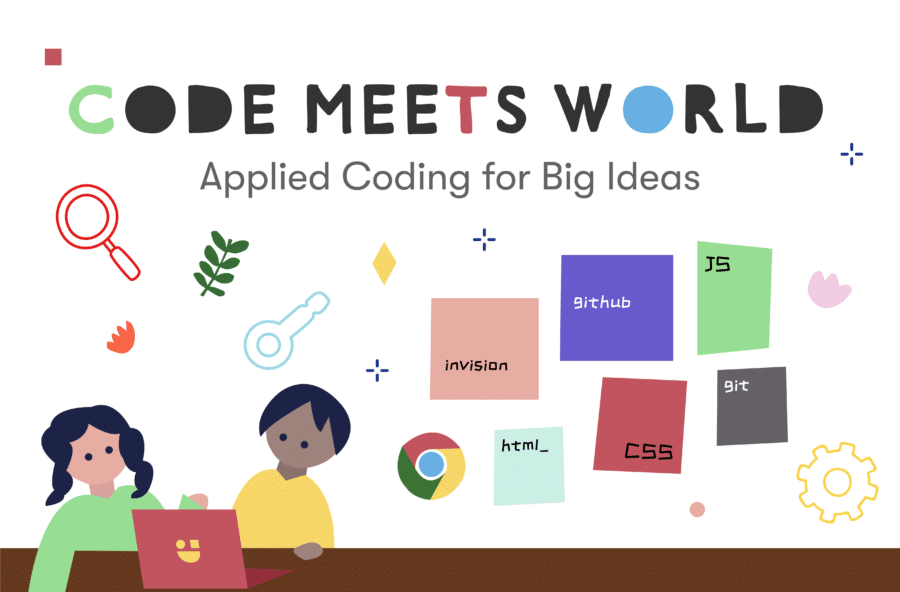Introducing Code Meets World: An Interdisciplinary Approach to Tech and Impact
June 25, 2020

It all goes back to the purpose of education.
Perhaps that’s subjective, but for us at Saturday Kids, it’s all about enabling and empowering kids to solve the most pressing problems in the world.
That’s why we’ve been incubating Code Meets World: Applied Coding for Big Ideas – a year-long programme for kids to learn about real-world problems by grappling with dynamic data to explore, analyse and communicate the big questions and ideas shaping the world. Shifting our focus beyond creativity to application, kids’ll create interactive, data-driven projects using web-based technologies, learning and applying coding languages like HTML, CSS, and Javascript.
- A sample of what kids will make with HTML and CSS in their first module!
Code Meets World is probably our most ambitious programme for kids yet, and we know that it might not appeal to most parents in the mainstream: This programme – like all our others – won’t improve kids’ academic grades overnight. But if we’ve done our job, it will make kids more curious about the world around them, and empower them to apply their coding skills to address problems they’re passionate about solving.
Here’s how:
Interdisciplinary learning makes for better problem-solvers
To take on the world’s biggest problems, problem-solvers need to learn and to think widely and from different perspectives.
As Brad Smith and Harry Shum of Microsoft write in The Future Computed, “If AI is to reach its potential in serving humans, then every engineer will need to learn more about the liberal arts and every liberal arts major will need to learn more about engineering.”
In other words, there’s a need for learning to be interdisciplinary. That’s because most urgent or wicked problems are not one dimensional – if they were, they wouldn’t be so difficult to solve!
Engaging kids across the board with multiple entry points
All kids should have a fair shot at creating their future (it belongs to them, after all!), and we believe that a powerful interdisciplinary tech education will play a large part in determining their opportunities to do so.
While in the planning phase of Code Meets World, we defined our target students broadly. We wanted to teach kids into the humanities, arts, and design; kids who want to be programmers; kids just a little bit curious about code and its applications; and kids in less-developed countries who are hungry for a brighter future for themselves and their communities.
These profiles are wide and diverse, but we built Code Meets World for each and every one of these kids to realise and apply the positive possibilities of code, and to provide the tools and environment for them to discover the fullness of their potential.
Built for impact
As we piloted this programme in the middle of 2020, we built in a few new features to optimise for impact.
• Rigorously collecting data and feedback to evaluate the outcomes for students across dimensions, so we can iterate where necessary to meet the programme’s objectives
• Designing remote-friendly curriculum, opening up the possibility of delivering the programme to curious kids anywhere in the world
• For the first time, the support of donors to our Pay it Forward fund has allowed us to kickstart classes with an equal mix of fee-paying students and graduates from our Code in the Community programme, which provides free coding classes to kids from lower-income families!
The journalist Angus Hervey describes the current situation the world is in as a ‘great turning’, where we’re concurrently standing at the cusp of impending collapse and immense possibility. Whether we’ll be able to pull through to solve the world’s wicked problems – like climate change and income inequality, just to name a few – will hinge on whether the power of tech is channeled to the right places.
At this point, we can’t afford for tech to work in silo from the rest of the world. And if you agree, we’ll see you where Code Meets World. Modules 1-4 of Code Meets World are now open for registration as part of Saturday Kids Greenhouse – you’ll find all the deets and more here.

